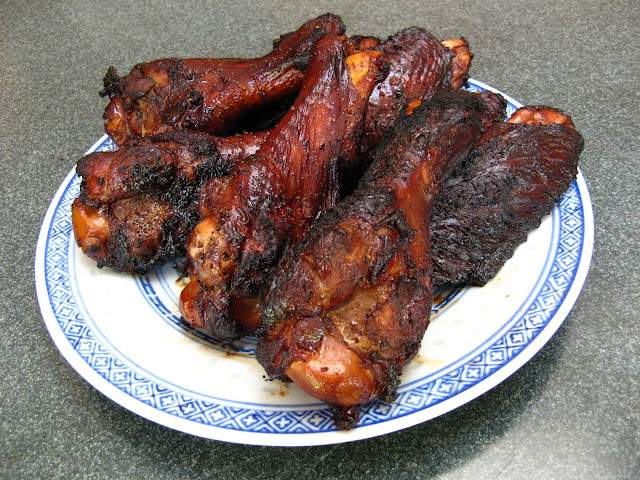This recipe was update on 25 Aug 2015. Some instructions and
ingredient quantities were changed, and metric measurements added.
I made this dish because I wanted to use up some remaining
long beans and I wanted a dish with mung bean vermicelli. Long beans are a
favorite vegetable of mine and differ from regular green beans in the most
obvious way; they are really long in length. If you can’t find long beans at
your favorite market, you can easily substitute regular green beans.
Mung bean vermicelli is also called bean thread noodles. The
“noodles” (made from mung beans) are very thin and brittle when dry, and become
transparent and soft after soaking in hot water. The dry version can actually
be fried quickly in a wok, where it will puff up and then usually serves as the
crispy base for another dish (you see this in Chinese restaurant dishes). After
soaking in water, the soft vermicelli is added to a dish, where it soaks up and
takes on the flavor of the sauce (so you’ll need to add more water or stock to
get a sauce or gravy).
The natural additions for this dish are ground pork and
dried shrimp. In this case, I used dried shrimp that are very small and added
it to the pork before marinating. You need to add a good amount of these very
small dried shrimps to make them noticeable in the dish. The next time I make
this dish, I might use the medium sized dried shrimp so that their presence is
obvious.
After I made this dish and took my first bite, I immediately
noticed that the texture of the dish wasn’t right. I should have added black,
cloud ear, or wood ear fungus to give the dish a distinct crunch. These
funguses sounds like an odd ingredient, but are themselves tasteless. Both are
dark in color and come fresh or dried, and either whole or already cut into
strips. Black and wood ear funguses are available at your local Asian
supermarket. I’ve added that ingredient to the recipe even though I didn’t use
it in this version.
Enjoy!










